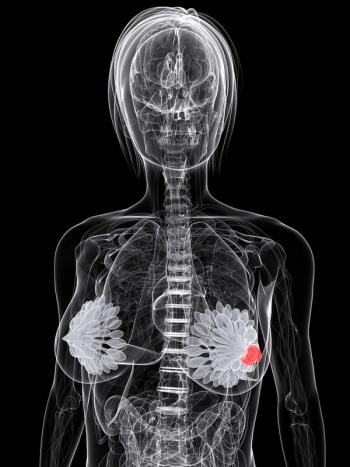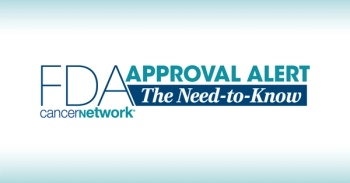
Patients With nmCRPC Continue to See Benefit With Darolutamide Despite Comorbidities, Concomitant Medications
Data from the ARAMIS trial that were presented at 2022 ASCO GU showed that darolutamide benefit for patients with nonmetastatic castration-resistant prostate cancer was consistent regardless of the number of comorbidities or concomitant medications.
Data presented at the
For the study, patients with nmCRPC were randomized 2:1 to receive either darolutamide (n = 955) or placebo (n = 554) while continuing treatment with androgen deprivation therapy. At the final data cut-off date of November 15, 2019, overall survival (OS) and adverse events (AEs) were evaluated in patients with a median of 6 or fewer or more than 6 comorbidities and 10 or fewer or more than 10 concomitant medications. Comorbidities evaluated included metabolic, cardiovascular, and other (osteoarthritis and arthralgia and back pain, benign prostatic hyperplasia, constipation and gastroesophageal reflux, and renal insufficiency). Concomitant medication classes/subclasses included gastrointestinal/metabolic, cardiovascular (antihypertensives and non-antihypertensives), pain/inflammation, and urologic.
“More than 50% of the patients in the ARAMIS trial, which was a very significant number of patients…had a minimum of 6 or more comorbidities of significance,” commented study coauthor Neal D. Shore, MD, in an interview with CancerNetwork®. Specifically, 795 of the total cohort of 1509 patients had at least 6 comorbidities, and 813 patients had received at least 10 concomitant medications.
The investigators reported that in patients with at least 6 and more than 6 comorbidities, darolutamide prolonged OS compared with placebo (HR, 0.65 and 0.73, respectively). The OS benefit for darolutamide was found to be consistent in patients with metabolic, cardiovascular (CV), and other comorbid disorders (HR range, 0.39-0.88). OS was also prolonged in patients receiving at least 10 and more than 10 concomitant medications (HR, 0.76 and 0.66, respectively). “Subgroups of [patients] receiving concomitant medications for gastrointestinal/metabolic disorders, CV disease, urologic disorders, and pain/inflammation achieved similar OS benefit with [darolutamide vs placebo] (HR range, 0.45–0.80),” wrote the authors.
Regarding AEs, 447 patients with at least 6 comorbidities (83%) and 366 patients with more than 6 comorbidities (90%) experienced any AE, vs 242 (74%) and 195 patients (88%) receiving placebo, respectively. A total of 127 patients with at least 6 comorbidities (24%) and 124 patients with more than 6 comorbidities (31%) experienced a grade 3 or 4 AE, vs 58 (18%) and 61 (28%) patients receiving placebo, respectively. A total of 43 patients with at least 6 comorbidities (8%) and 42 patients with more than 6 comorbidities (10%) experienced an AE leading to permanent study drug discontinuation, vs 20 (6%) and 28 patients receiving placebo (13%).
A total of 371 patients (77%) taking at least 10 concomitant medications and 442 patients taking more than 10 concomitant medications (95%) experienced any AE, vs 184 (68%) and 248 (91%) of patients receiving placebo, respectively. Sixty-seven patients (14%) taking at least 10 concomitant medications and 183 patients (39%) taking more than 10 concomitant medications experienced a grade 3 or 4 AE, vs 36 (13%) and 82 patients (30%) receiving placebo, respectively. Finally, 35 patients taking at least 10 concomitant medications (7%) and 50 patients taking more than 10 concomitant medications (11%) experienced an AE leading to permanent study drug discontinuation, vs 17 (6%) and 29 patients (11%) receiving placebo, respectively.
“We're showing here is that the overall survival benefit, as well as the safety analysis, regardless of the number of comorbidities, was rather significant,” Shore said.
Reference
Fizazi K, Shore ND, Smith MR, et al. Efficacy and safety outcomes of darolutamide in patients with nonmetastatic castration-resistant prostate cancer with comorbidities and concomitant medications from ARAMIS. Presented at: 2022 Genitourinary Cancers Symposium; February 17-19, 2022; San Francisco, California. Abstract #256
Newsletter
Stay up to date on recent advances in the multidisciplinary approach to cancer.

















































































